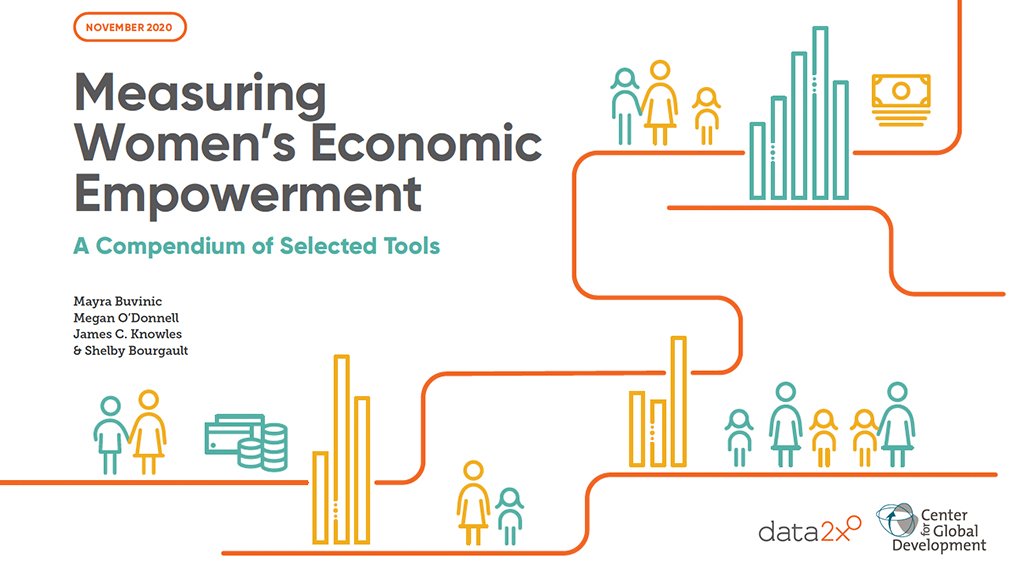- Measuring Women’s Economic Empowerment: A Compendium of Selected Tools1.12 MB
Both of these questions have been used by researchers to measure women’s economic empowerment (WEE). Women’s labor force participation is typically viewed as one important aspect of WEE. However, working for pay should not be considered synonymous with WEE, since a woman’s ability to earn income does not ensure that she has control over how it is spent, saved, or invested. To that end, researchers often inquire about whether women also have a say in how the family budget is spent as a proxy for their decision-making power in the household. Questions such as these that capture whether women both earn and control income can be applied to whole populations, allowing us to understand the degree to which women across a city, state, or country are empowered economically. They can also assess if a program intervention, such as one providing skills training to young women seeking to enter the workforce, or access to financial capital or business management training to women entrepreneurs, has in fact empowered them economically.
A surge of interest from governments, the private sector, researchers, and advocates in promoting WEE has led to a proliferation of WEE measurement tools. We define “tools” for purposes of this paper as resources that contain conceptual frameworks, sets of indicators, and/or indexes that are designed to support the measurement of WEE outcomes and track their progress over time.2 We note that the multitude of tools currently available makes it difficult to know which are most useful for specific purposes and contexts and which have been developed most rigorously.
Report by the Centre for Global Development
EMAIL THIS ARTICLE SAVE THIS ARTICLE ARTICLE ENQUIRY
To subscribe email subscriptions@creamermedia.co.za or click here
To advertise email advertising@creamermedia.co.za or click here











